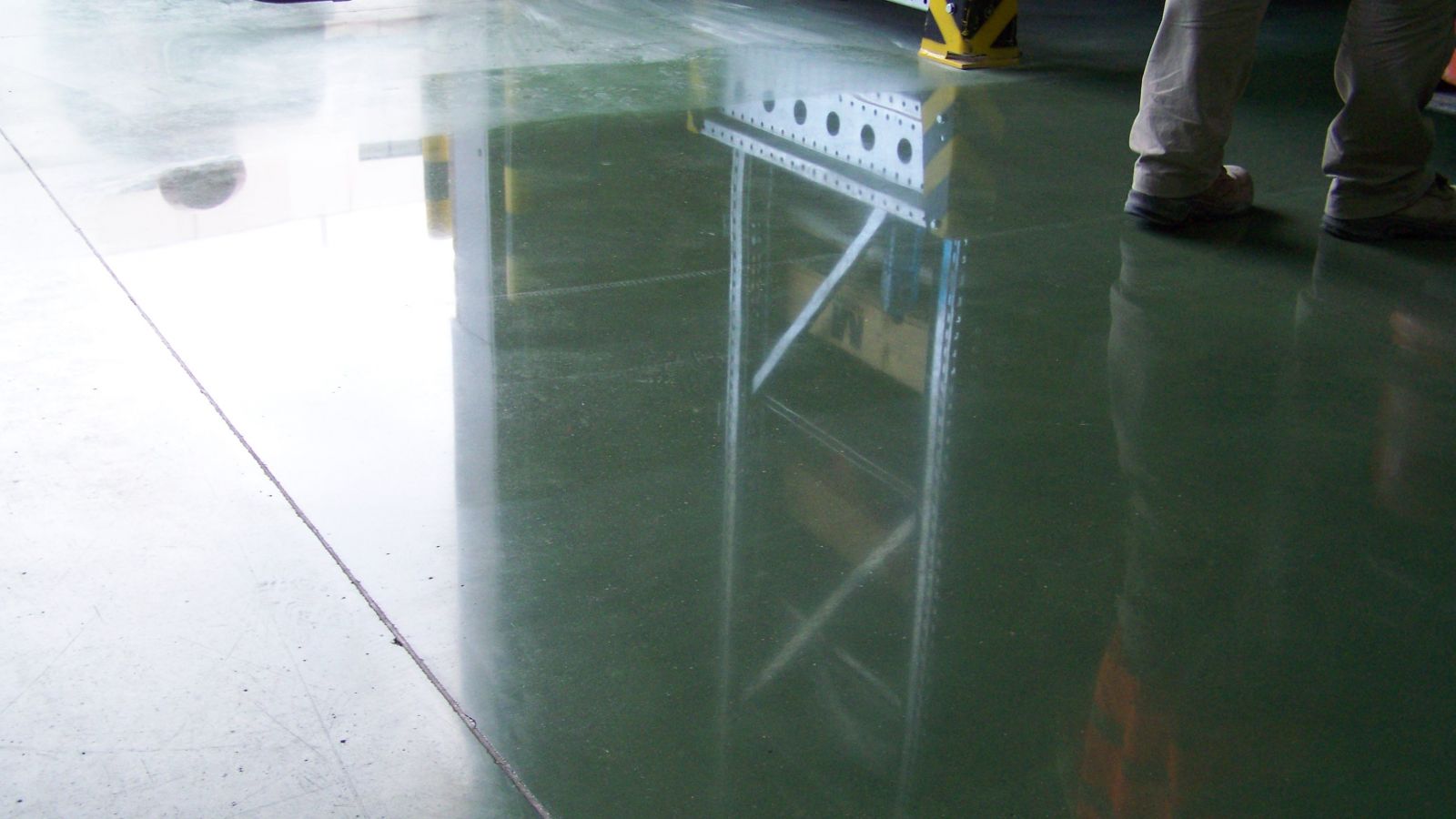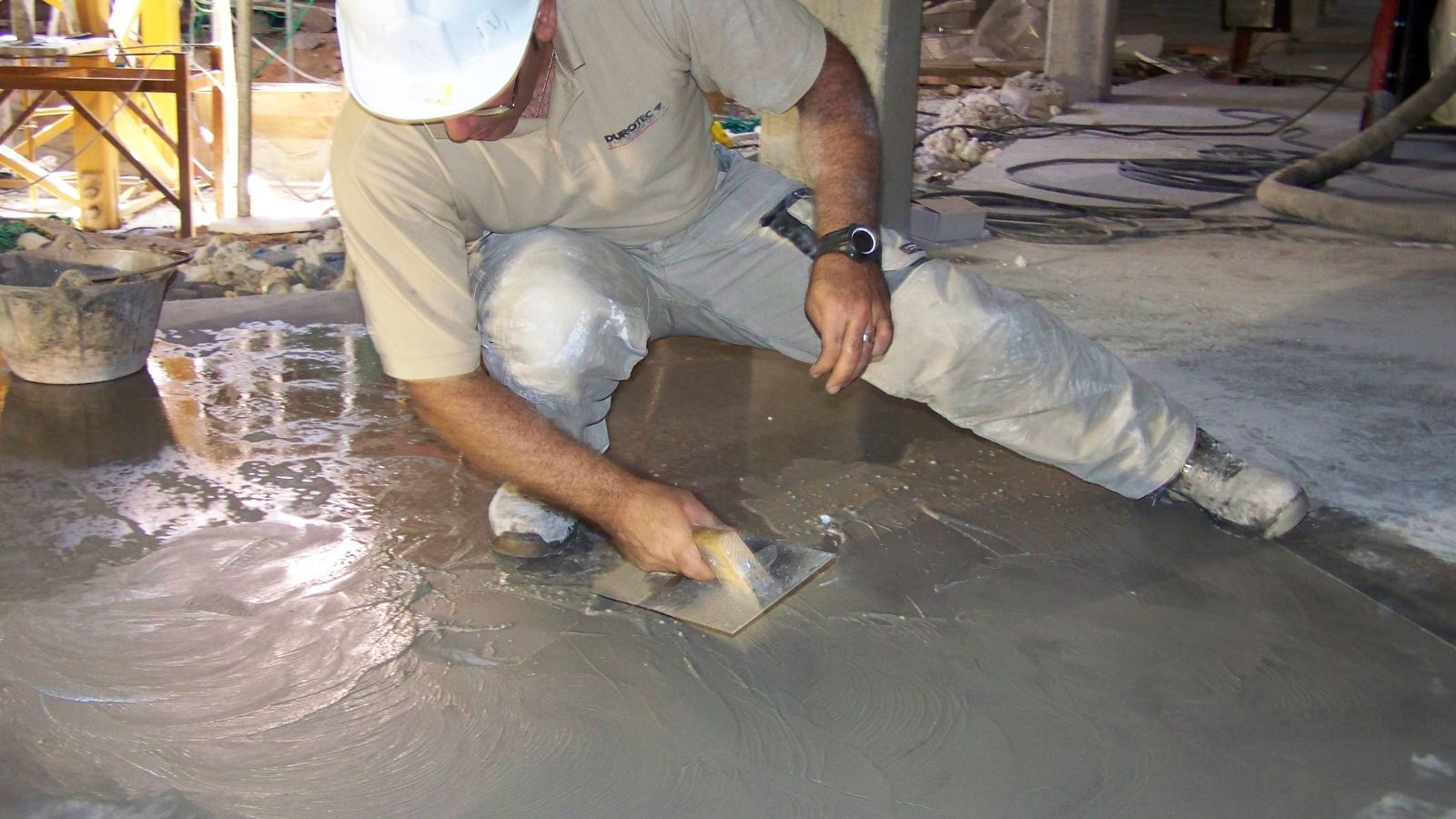Frequently Asked Questions
 Is polished concrete slippery?
Is polished concrete slippery?
Kept clean and dry, polished concrete floors are generally not any more slippery than other hard flooring surfaces. And they tend to be less slippery than waxed linoleum or polished marble. But public facilities that want to provide extra protection against slip-and-fall accidents can treat polished floors with anti-slip conditioners. These products contain special additives designed to improve traction and make wet surfaces safer. They must be reapplied periodically, but they can simply be mopped on during routine cleaning.
What are the maintenance requirements?
It is virtually maintenance free. Polished concrete has the lowest cleaning per foot cost of any flooring. Just dust mop, vacuum or sweep loose debris and then wet mop or use an auto scrubber with an acid free cleaner.
What is the process to polish my concrete?
The floor should be in place at least 28 days before polishing begins to ensure adequate curing. Some retail and warehouse facilities that plan to polish their floors after placement may specify the installation of as flat a floor as possible to minimize the polishing steps required and achieve the best quality polish. Existing floors typically require some surface preparation prior to polishing to remove dirt, grease, coatings, or blemishes. However, floors that are wavy, need extensive patching, or are extremely porous may not be good candidates for polishing. Simply put, polishing concrete is similar to sanding wood. Heavy-duty polishing machines equipped with progressively finer grits of diamond-impregnated segments or disks (akin to sandpaper) are used to gradually grind down, hone and polish surfaces to the desired degree of shine and smoothness. The process begins with the use of coarse diamond segments bonded in a metallic matrix. These segments are coarse enough to remove minor pits, blemishes, stains, or light coatings from the floor in preparation for final smoothing. Depending on the condition of the concrete, this initial rough grinding is generally a three- to four-step process. The next steps involve fine grinding of the concrete surface using diamond abrasives embedded in a plastic or resin matrix. Crews use ever-finer grits of polishing disks (a process called “lapping”) until the floor has the desired sheen. For an extremely high-gloss finish, a final grit of 1500 or finer may be used. Experienced polishing crews know when to switch to the next-finer grit by observing the floor surface and the amount of material being removed.
To help solidify and densify polished concrete surfaces a liquid impregnating/penetrating hardener is added to the concrete. This is added during the process in between grits. The point at which this is added is dependent on the condition of the concrete. These products, work by reacting chemically with the concrete to form a hard, crystalline structure and will make the concrete up to 400% more abrasion resistant. They also prevent dusting of concrete and offer extra protection from water penetration and staining.
How long will it last?
Polished concrete depending on its use and maintenance can last over 15 years. One fact is for sure, it is going to last many, many years without the use of special cleaners, waxes or coatings.
How do you maintain the shine?
Although keeping polished concrete shiny requires minimal effort and expense, some regular care is necessary. A simple maintenance program of occasional dusting to remove grit and damp mopping with a neutral cleaner to enhance the shine is recommended. Special cleaners and conditioners for polished concrete that not only clean the surface, but also leave behind a dirt-resistant film are also available. These products can be applied with a mop or auto scrubber and do not require buffing.
With basic cleaning, polished concrete should keep its luster for years. Eventually, though, the shine can dull, especially in high-traffic areas. Fortunately, it’s easy to restore the gleam. Sometimes simply buffing the floor with a commercial polishing compound will do the trick. If more touch-up is necessary, the floors can be lightly re-polished with a fine-grit abrasive.
Can all concrete be polished?
Almost any structurally sound concrete floor, whether new or old, can be polished. But there are some exceptions. For new floors, no special mix design is required to achieve good results. However, the floor should be in place at least 28 days before polishing begins to ensure adequate curing. Some retail and warehouse facilities that plan to polish their floors after placement may specify the installation of as flat a floor as possible to minimize the polishing steps required. Existing floors typically require some surface preparation prior to polishing to remove dirt, grease, coatings, or blemishes. However, floors that are wavy, need extensive patching, or are extremely porous may not be good candidates for polishing. An experienced Bomanite Custom Polishing Licensed Contractor can determine a floor’s suitability. Applications for Polished Concrete
Because polishing is a multi-step process, customers can choose the level of sheen—from satin to high-gloss—that meets their maintenance and aesthetic requirements. This versatility makes polished concrete an ideal flooring material for a variety of applications including:
- Large warehouses and warehouse outlets
- Retail stores
- Hotels and restaurants
- Office buildings
- Auto showrooms
- Private residences
Ease of maintenance is the key reason many warehouses and retail facilities are opting for polished concrete. Not only are polished floors easy to clean, requiring only occasional damp mopping, they hold up well to heavy forklift and foot traffic. They also eliminate the need for messy waxes or coatings—as well as the associated labor, time, and expense to apply them. What’s more, the glossy surface resists the marks of forklift truck tires and staining from oil and chemical spills.
The high light reflectivity of polished concrete is another important benefit, especially for office buildings, hotels, restaurants, and other public facilities that want to project a bright, clean, professional image. Some customers simply want a look that’s unique. Polishing can give concrete a higher degree of shine—similar to polished marble or granite—than can be achieved with a high-gloss coating. This makes polished concrete a particularly good alternative for homeowners or businesses that can’t afford marble or granite floors but want the same brilliant, mirror-like finish. To replicate the color of stone, chemical stains can be applied to the concrete during the polishing process or concrete that has been integrally colored can be polished. It’s also possible to produce a terrazzo look by grinding through the top few millimeters of the concrete surface to expose the aggregate.


